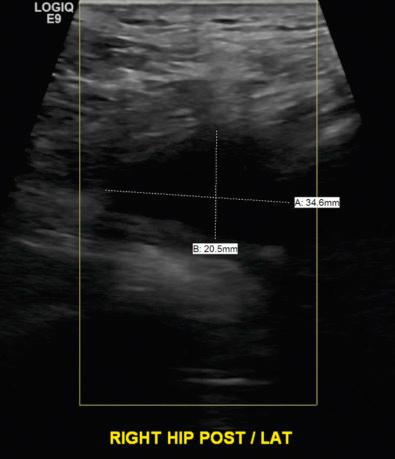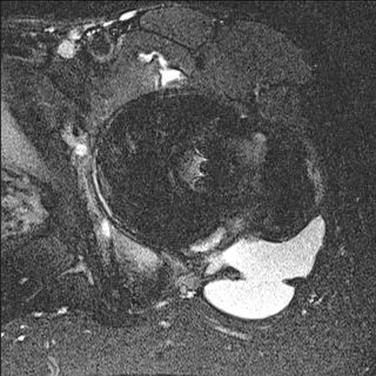Physical Address
304 North Cardinal St.
Dorchester Center, MA 02124
Awareness of metal-on-metal (MOM) failure and taper corrosion has increased and requires special consideration. Regular surveillance of MOM articulations is recommended.
Thorough assessment is required to evaluate all common causes of postarthroplasty hip pain.
A systematic diagnostic approach should be taken during the workup, including serum and synovial fluid markers of periprosthetic joint infection, metal levels, and advanced imaging when indicated.
Traditional laboratory values may be unreliable in the setting of adverse local tissue reaction (ALTR) to metal debris.
In the presence of significant ALTR, appropriate preoperative planning is paramount.
There is a higher complication rate for revision for MOM or taper corrosion failures.
In 2015, the overall revision burden — defined as the ratio of the number of revision hip arthroplasties to the total number of total hip arthroplasties (THAs) — in the United States was 10.2% according the American Joint Replacement Registry. This number is consistent with other registries, which reported a revision burden between 9.7% and 11.9%. The number of revision THAs performed in the United States is projected to increase by 137% between 2005 and 2030. There is an intuitive relationship between the growth of primary and revision procedures performed. Concurrently, as technology, surgical techniques, and perioperative management continue to improve, there has been a notable shift in the total joint arthroplasty population. In 2006, 40% of revision THAs were performed on patients younger than 65 years; by 2030, projections suggest that figure to grow to 50%.
Newer implant designs and materials appear to have improved implant survival rates. However, despite the continued success of THA, implant-related complications remain a challenge. The old saying that “you don't know what you don't know” certainly rings true—as changes in bearings and materials evolve, we are confronted with new challenges that remain to be solved. Metal-on-metal (MOM) bearings typify this point. Prior to 2000, the biggest issues with traditional metal-on-polyethylene (MOP) THAs were wear, osteolysis, and dislocation. Alternative bearings such as MOM became attractive solutions to this problem. Of all THAs performed in the United States in 2005, 35% were MOM bearings; yet, today, such implants represent a very small percentage of the bearing market. Developed to decrease dislocation and wear-related complications and to improve the longevity of the joint, the initial success was soon dwarfed by higher early failure rates in some designs, the prevalence of adverse local tissue reactions (ALTRs), and the potential for systemic metal toxicity. The effect of metal toxicity at the local joint level has been widely published.
Similar issues have been noted in patients with dual-modular neck component designs. Initially developed to increase surgical options, with modular neck features such as built-in anteversion, varus and valgus necks, and a variety of lengths, failure of multiple designs of these implants has resulted in dramatically decreased use. Dual-modular neck component use has changed significantly due to reports of neck fracture and corrosion. In 2015, they represented only 1.5% of all THA implants. Additionally, there has been a growing body of literature to suggest taper corrosion as a source of failure in MOP THA. Concern over taper corrosion has led to an increased use of ceramic femoral heads, which were reportedly used in 49% of primary THA in the United States in 2015, up from 36% in 2012. An identical shift has been reported in the Australian National Joint Replacement Registry, up from 36% in 2012 to 49% in 2015.
Revision surgery for ALTR associated with MOM bearings and taper corrosion pose unique challenges to the surgeon. Understanding the appropriate workup and common complications can facilitate improved surgical success and postoperative outcomes.
Patients should be evaluated in a step-wise fashion starting with a thorough history and physical examination. Those at high risk for ALTR—including MOM THA, dual-modular neck designs, and MOM resurfacing implants—may require special consideration, but one cannot negate the importance of a thorough evaluation. While there has been an increased interest in ALTR, more common diagnoses should be ruled out. A detailed history of the patient's symptoms and temporal relationship between symptom onset and surgical procedure should be obtained. Identify the location of the pain, when the pain started, and if the pain is progressive or changed in character since its onset.
Inspect the skin and surgical site for any evidence of infection or swelling. Palpate the hip and surrounding soft tissues to determine whether there are any masses or fluctuance. Range of motion should be assessed. Any weakness, particularly with hip abduction and flexion, should be compared to the contralateral hip and clearly documented, as this may be an indication of significant soft tissue compromise. A thorough neurovascular examination will evaluate potential extraarticular etiologies from neurogenic or vascular causes. It is important to remember that in many patients, ALTR may be asymptomatic and have normal physical examination findings.
Standard radiographs are required. We routinely will get a standing anteroposterior (AP) pelvis and hip, frog-leg lateral, and cross-table lateral radiographs. It is important to know what components were used; if the index procedure was performed outside of our institution, we routinely request operative reports and implant labels to document the identity of the implants. Assess component orientation and any evidence of loosening or osteolysis. If possible, we recommend using previous images for comparison. If there is uncertainty regarding the position of the components, a computed tomography (CT) scan can be ordered to better define component position.
An ALTR is defined here as a histopathologic response to implant debris that can include one or all of the following: so-called pseudotumors, aseptic lymphocyte-dominated vasculitis-associated lesion (ALVAL), soft tissue or bone necrosis, and osteolysis, all in various intensities. A pseudotumor is described as a solid, cystic or mixed granulomatous mass or masses that reside in the vicinity of a THA. It should be noted that ALTR is not limited to symptomatic patients, nor is it limited to patients with MOM components. Determining the presence of ALTR is becoming increasingly important, as ALTR may ultimately warrant surgery and lead to poorer outcomes should a revision surgery be inadvertently delayed. A consensus statement recommends surveillance with cross-sectional imaging on patients with MOM THA. Multiple different advanced imaging modalities have been used for the diagnosis and surveillance of ALTR, including ultrasound (US; Fig. 104.1 ), CT, and magnetic resonance imaging (MRI; Fig. 104.2 ).


Studies examining ALTR development in patients with MOM implants have shown wide variation in disease prevalence, ranging from 19.4% to 61%. Metal artifact reduction sequence (MARS) MRI has been the predominant method of ALTR detection in many studies. Ultrasound has also been demonstrated to have diagnostic value and is the most cost-effective; however, ultrasound is significantly dependent on the skill of the technician. Regardless of the imaging modality chosen, advanced imaging is warranted for diagnosis and surveillance of ALTR. It can also be used in preoperative planning in the event of revision surgery.
Become a Clinical Tree membership for Full access and enjoy Unlimited articles
If you are a member. Log in here